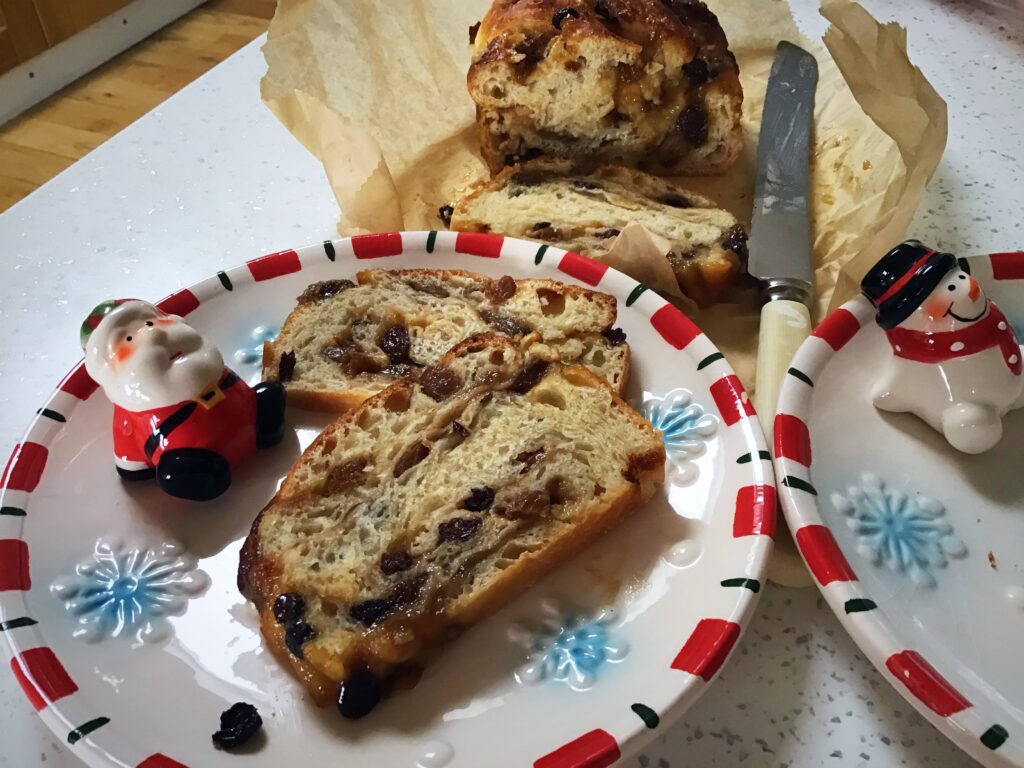Take one portion of my enriched sourdough dough, add some mincemeat, roll up, cut up, plait, and bake….and create a lovely Christmas loaf! That’s what I did here…
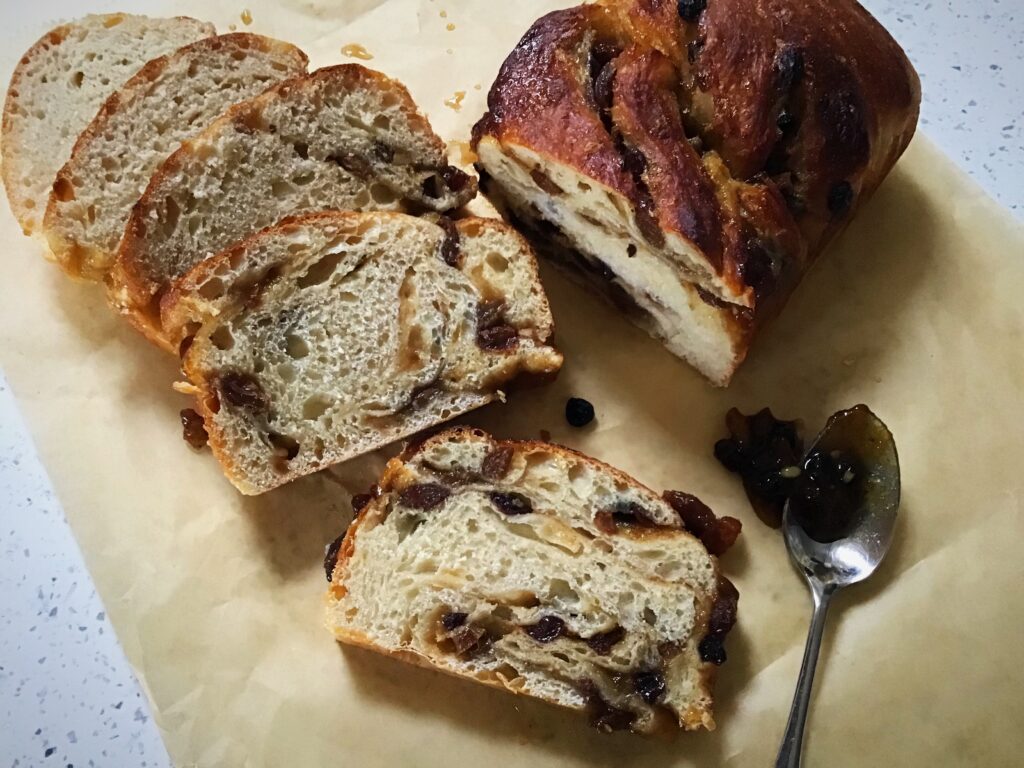
It tastes so good!!!!! And I don’t even like mincemeat! But partnering it with this dough worked perfectly…here’s what I did…
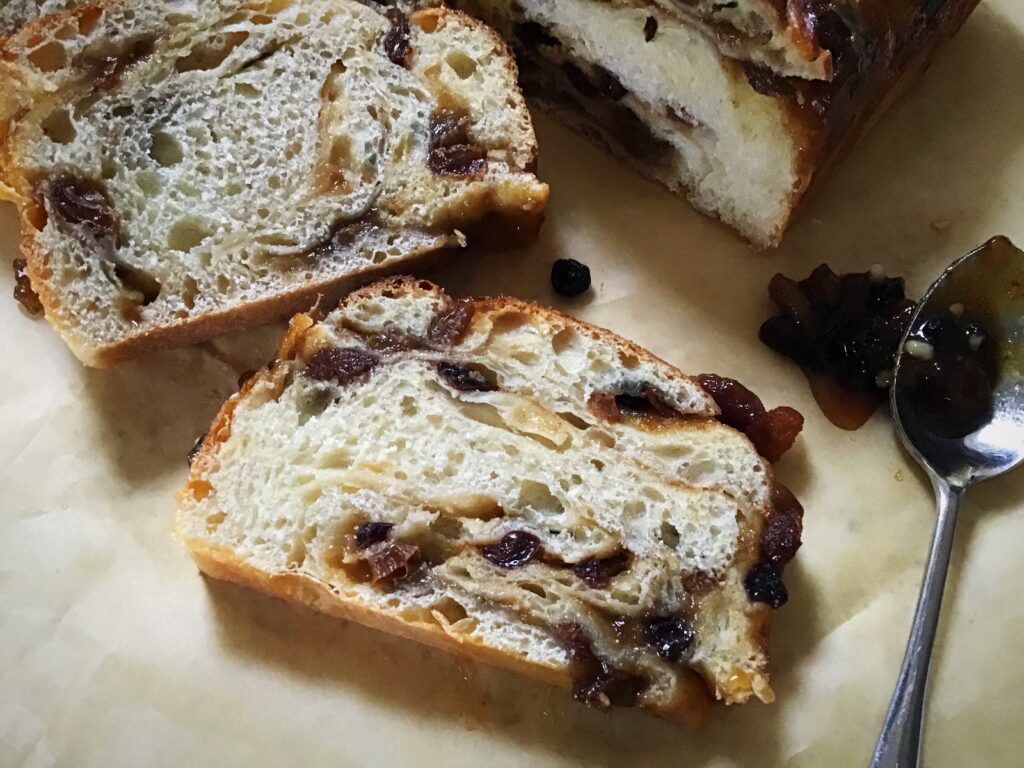
I made a standard portion of my enriched sourdough using all white spelt flour (you can use flour/s of your choice).
This is a long slow proving dough so it wasn’t fully proved until mid morning, which was the perfect time for the next step: I turned the dough out onto the kitchen counter then stretched it out to a rectangle, matching the width to the length of my loaf pan. I then spread several tablespoons of mincemeat over the dough…
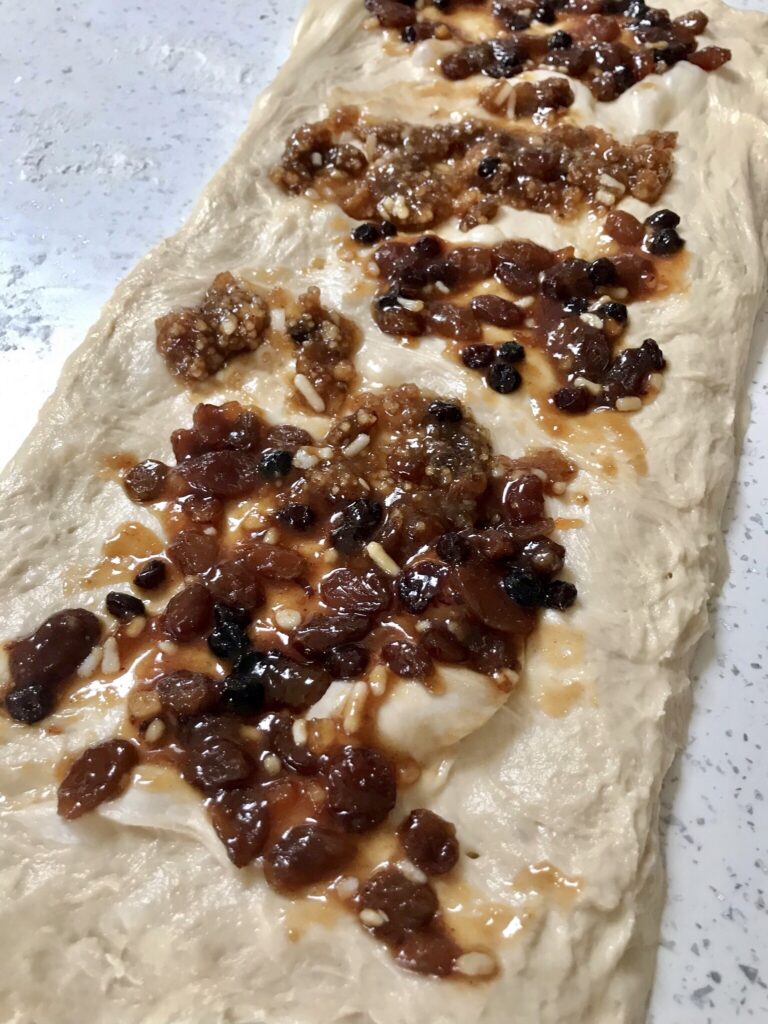
I rolled this up to a fat sausage, still matching the length of my loaf pan..
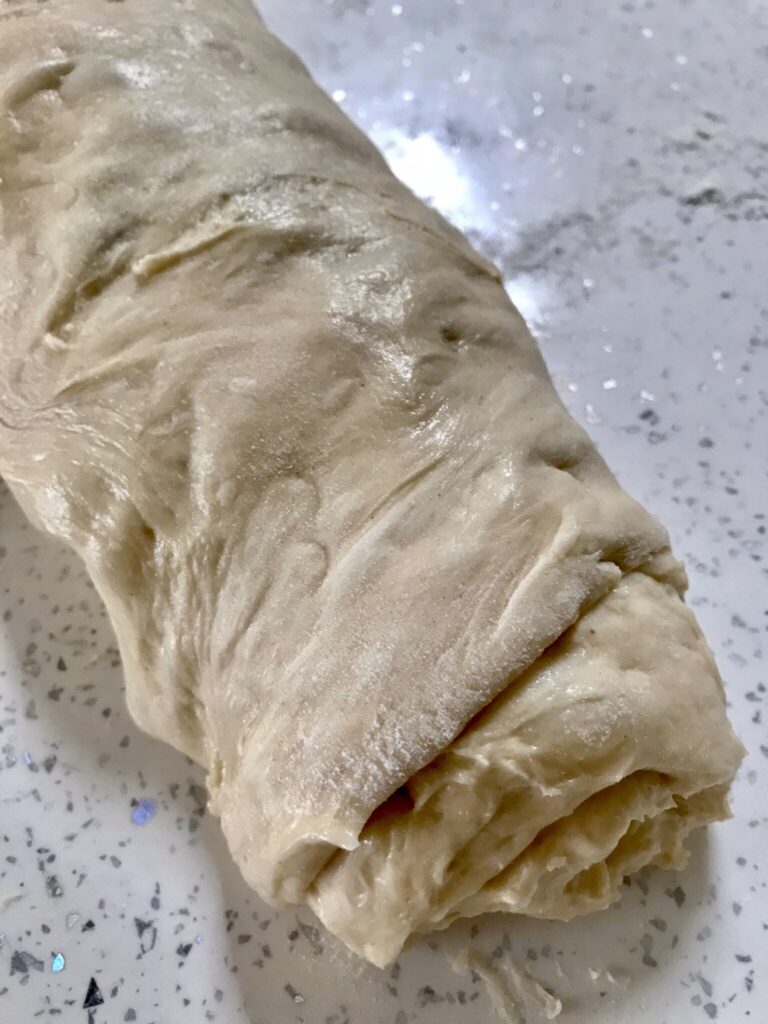
Cut the sausage length ways to make 2 long pieces…
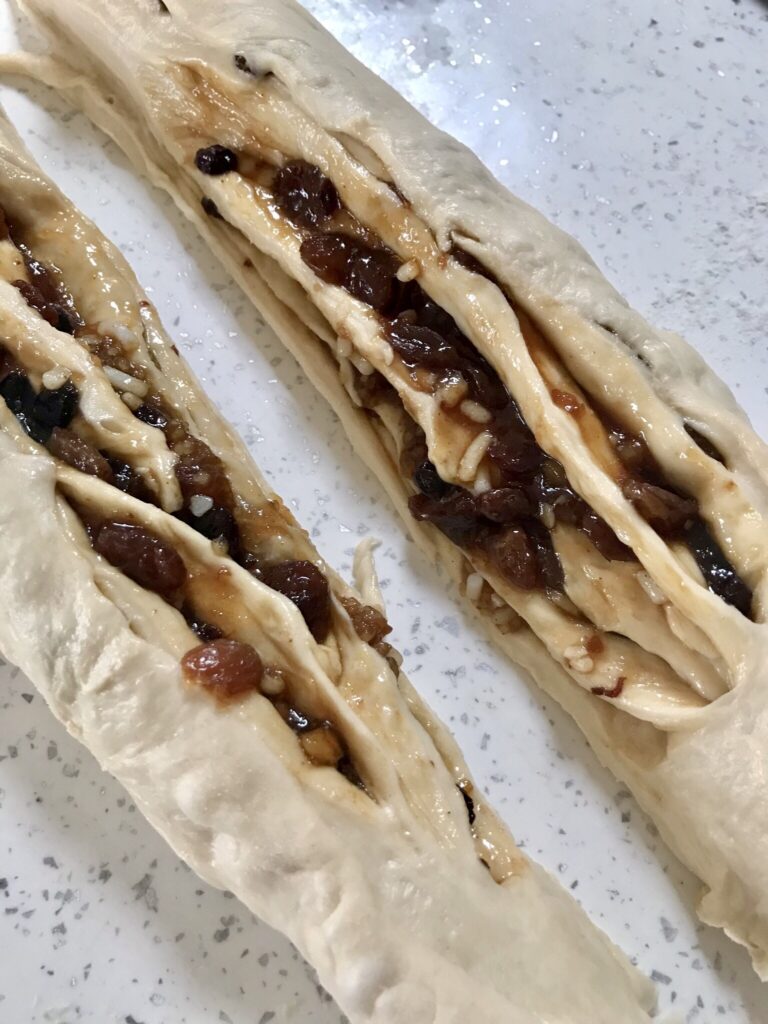
Then plaited the two pieces and lifted the whole thing into a loaf tin liner and into the loaf tin…
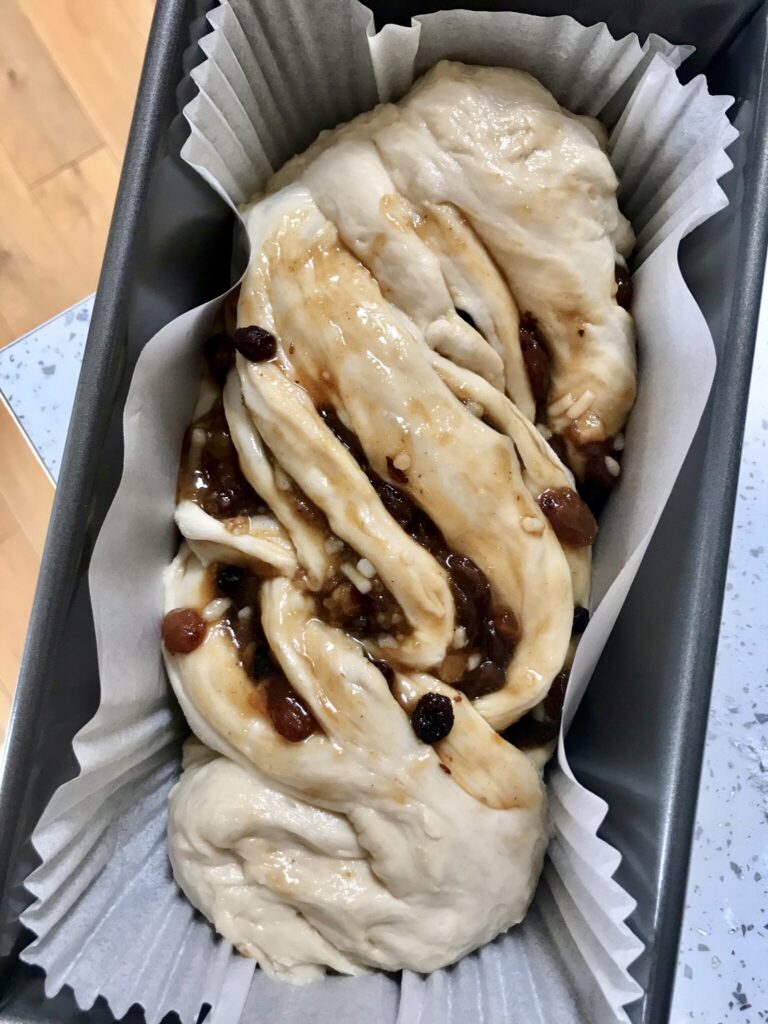
I then covered this again with my shower cap and left it on the counter to prove again for a few hours…
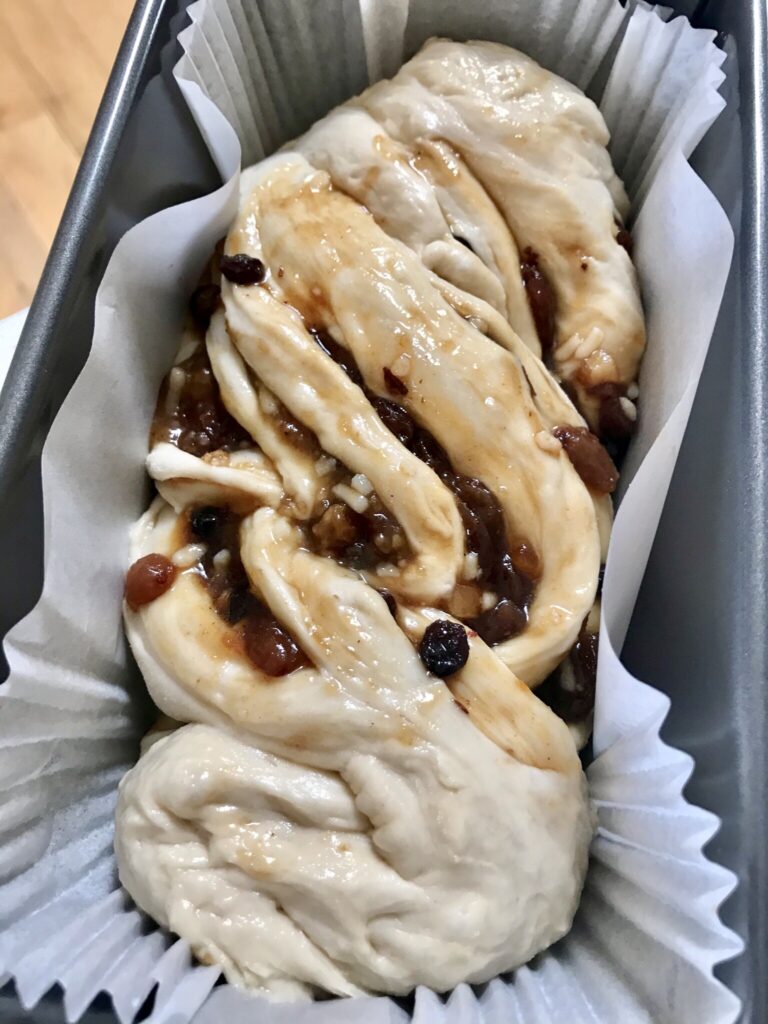
After a few hours the dough had puffed up…
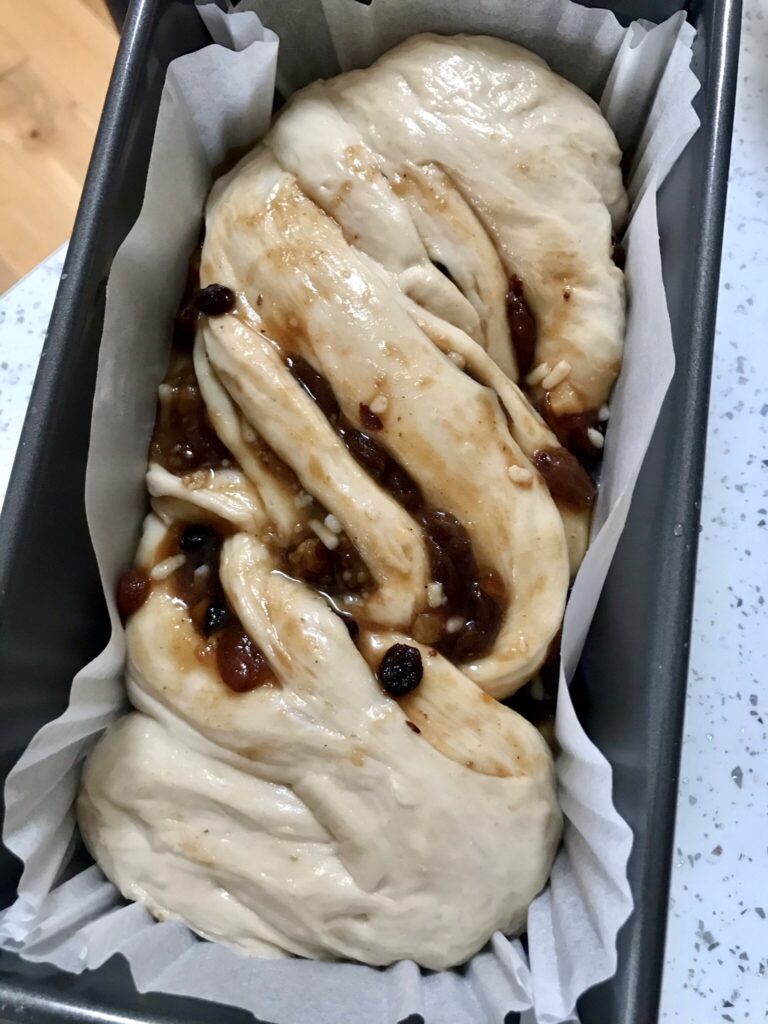
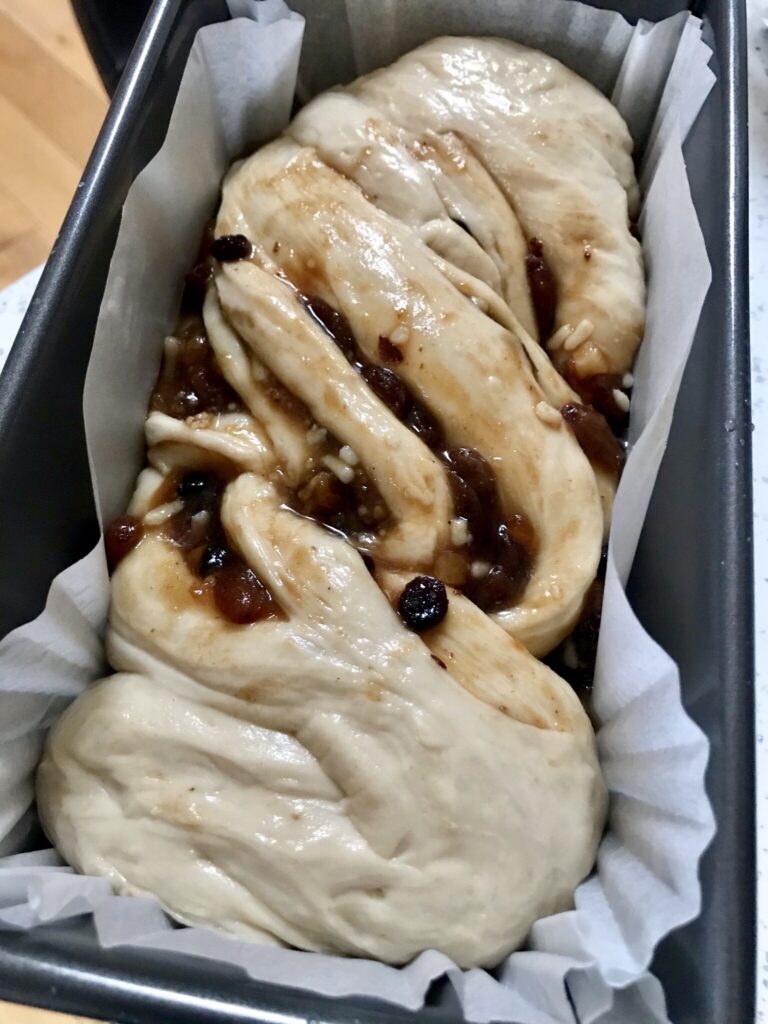
I brushed the top with egg white as per my main enriched recipe, and baked it uncovered, from a cold start, at 160C fan/convection, 180C non fan/convention, for 45-50 mins. It can be baked from a cold or hot start, bake for 5 mins less in a preheated oven.
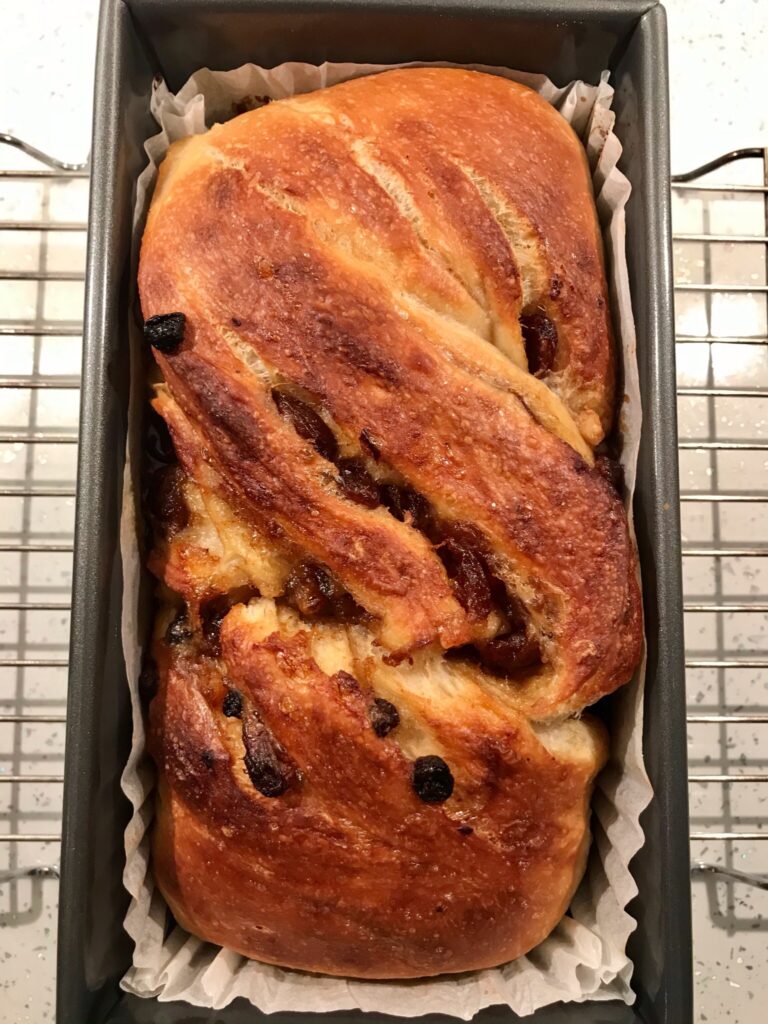
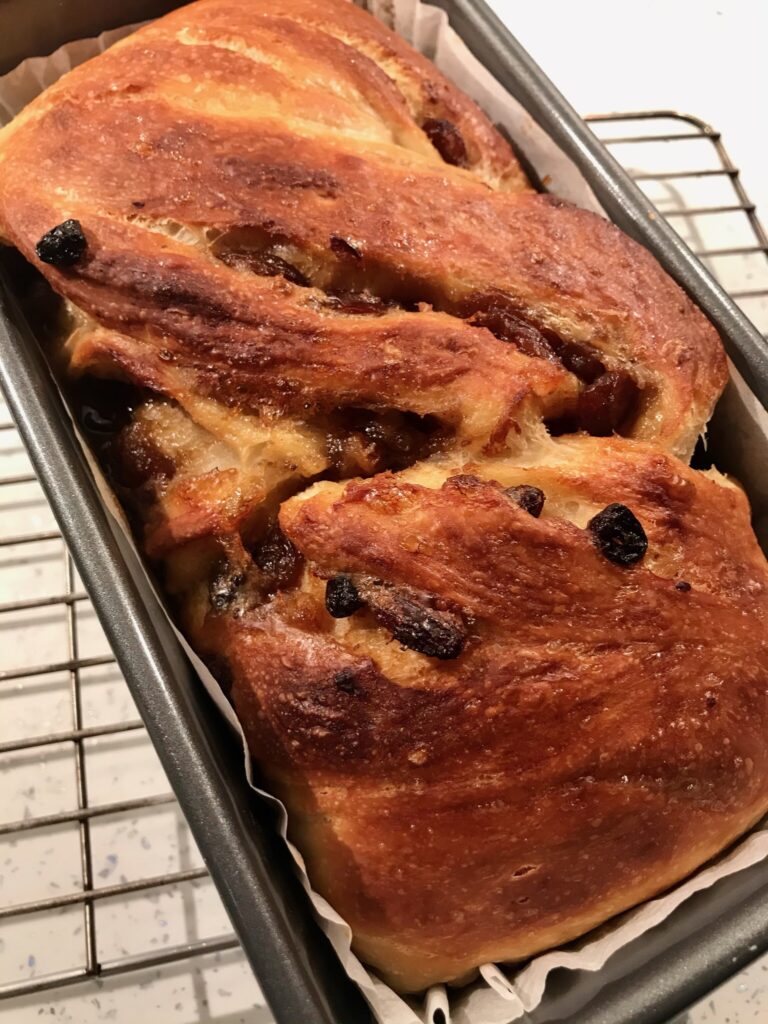
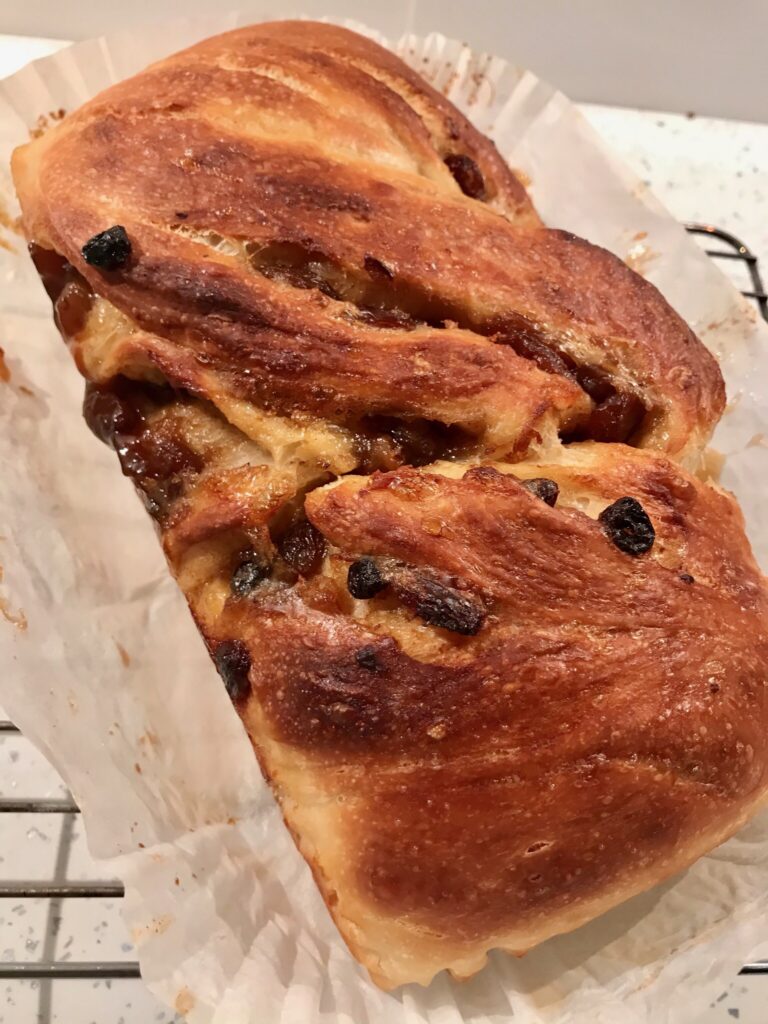
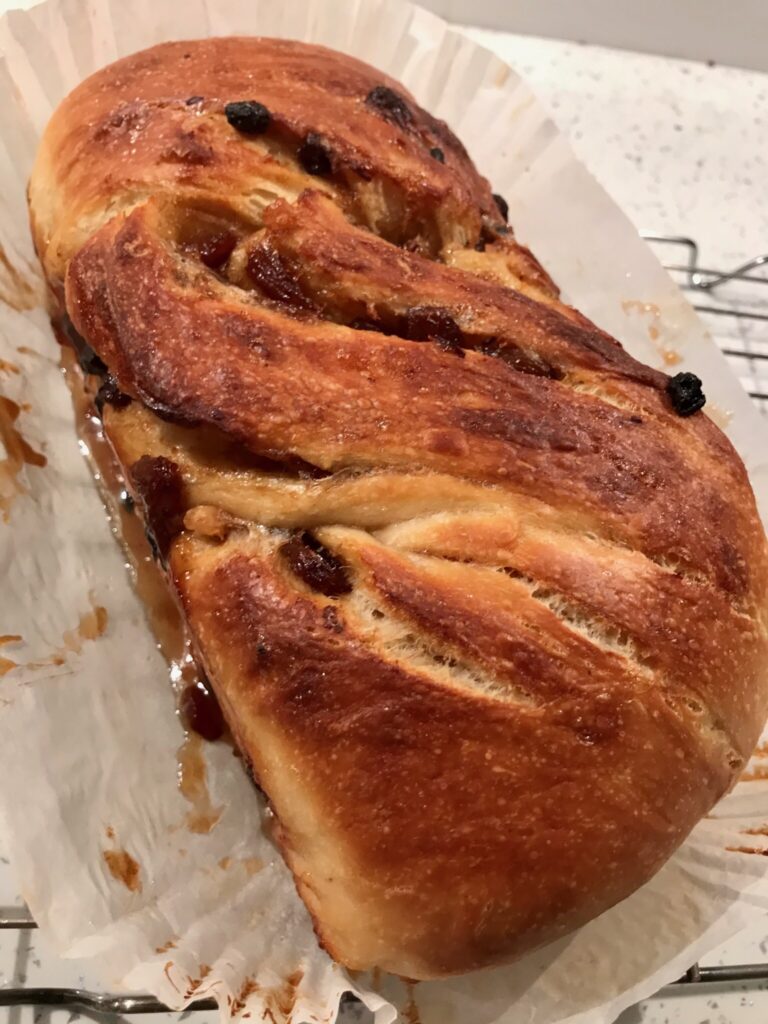
After an agonising wait, I cut into it…
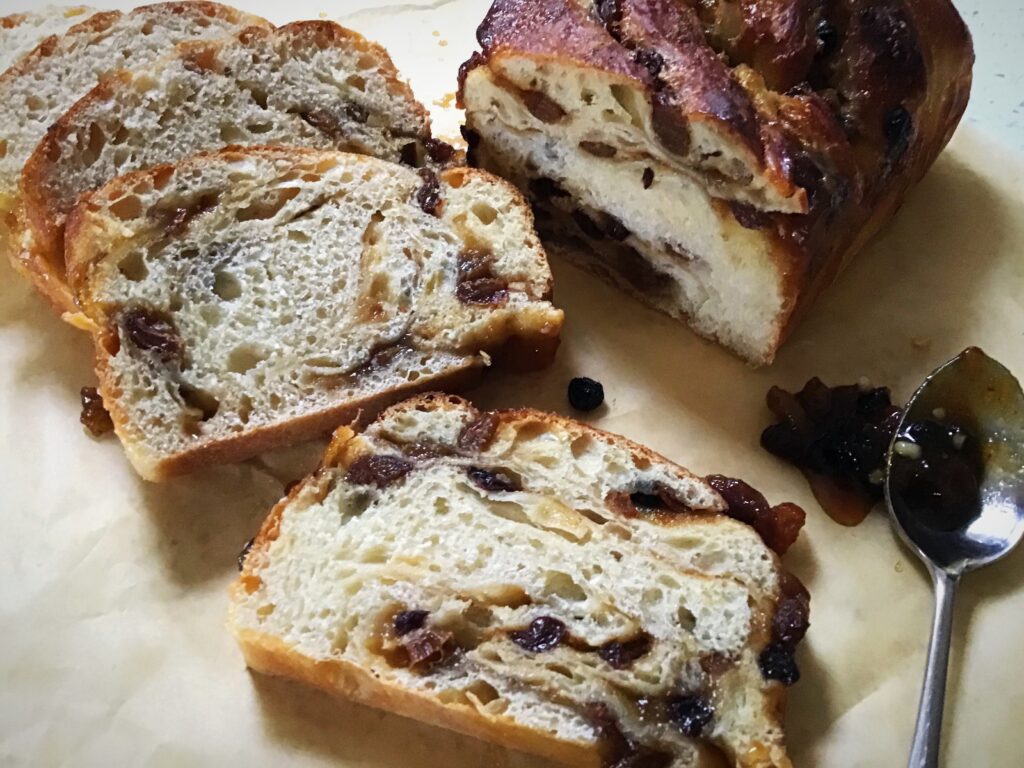
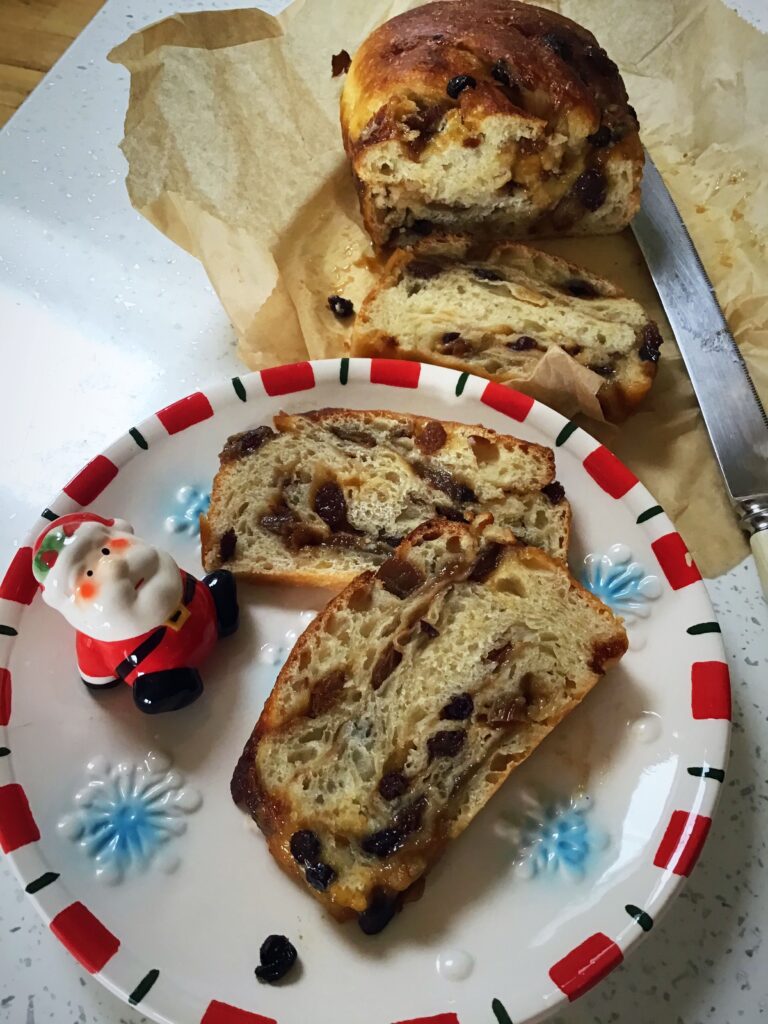
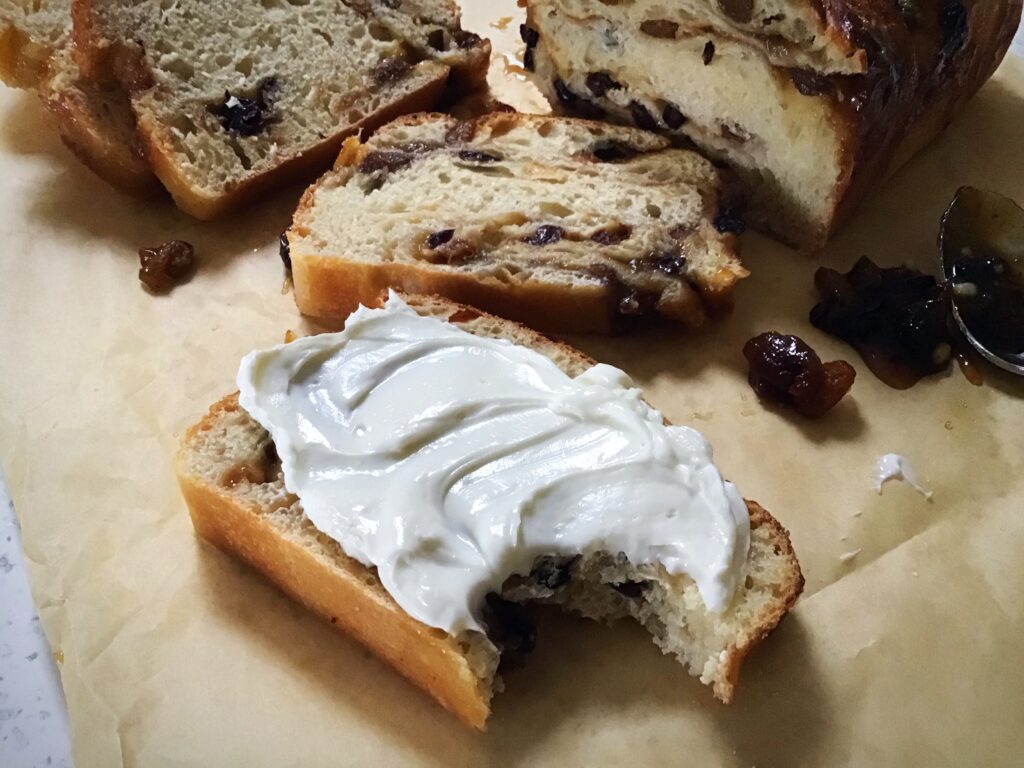
I hope you like the look of my babka…if you don’t have, or don’t like, mincemeat, try it with jam, chutney, or any filling of your choice. And if you do make a enriched sourdough babka with my recipe, please do share it and tag me, or send me a photo of your creation…happy baking!
